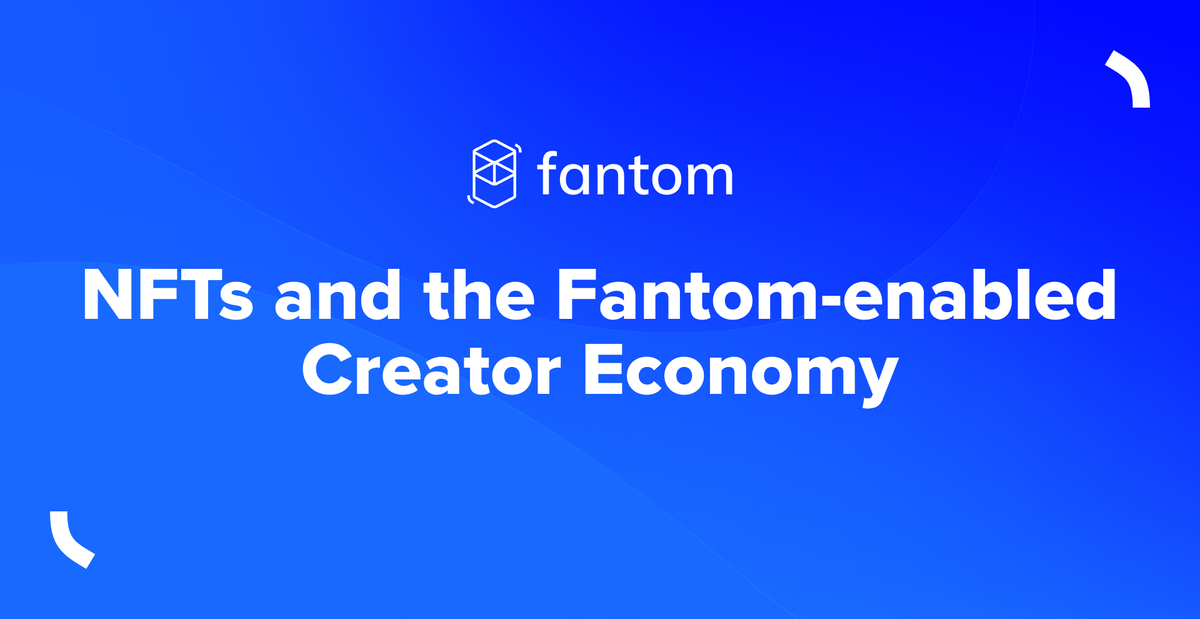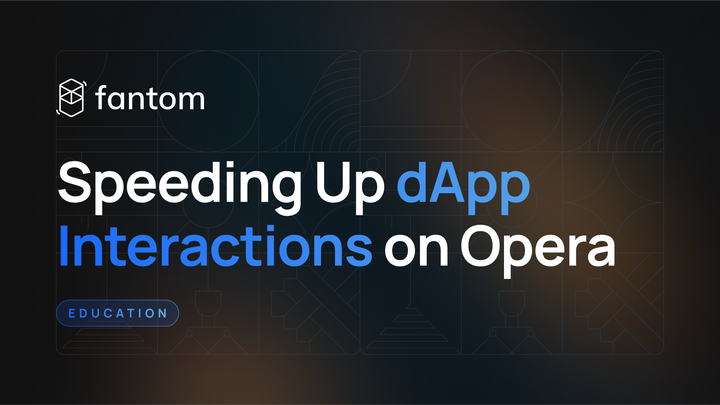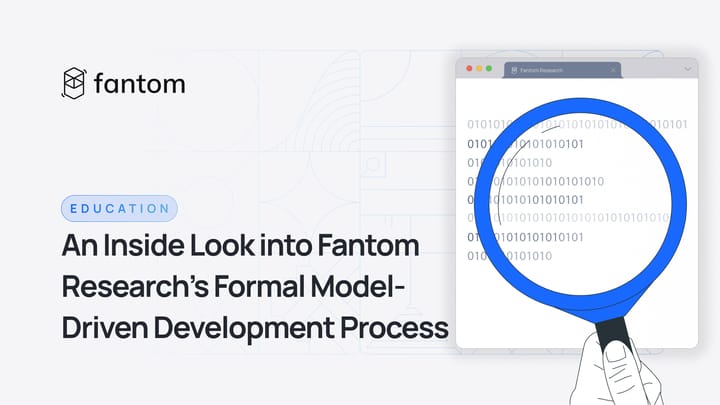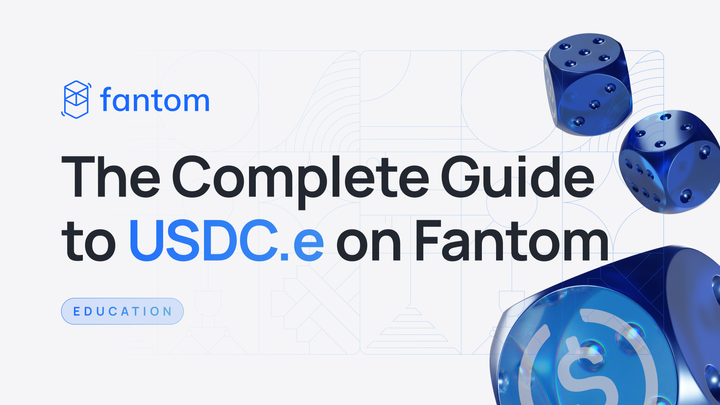NFTs and the Fantom-enabled Creator Economy

The Non-fungible Token (NFT) markets continue to grow at an unbelievable pace. As Market Insider reports, NFT sales in July reached $363.8 million, representing a 506% jump vs. June and approximately 1,300% since January.
The boom in NFTs represents ongoing mainstream adoption supported by better technologies.
On Fantom, NFT projects have multiplied as creators and builders take advantage of the network’s low fees and fast transaction speeds that support easy NFT creation, customization, and trading.
The Foundation is now finalizing Artion, a dedicated NFT marketplace and platform with 0% commissions that will bring even more activity to Fantom.
To help you keep up with rapid development on Fantom, let’s take a deep dive into NFTs to explore what they are and how they work. Along the way, we’ll examine how creators are using them on the Fantom network, and imagine the use cases that Fantom technology can uniquely address.
What are NFTs?
The NFT is a class of blockchain tokens. To understand NFTs, consider first what non-fungible means. Like a painting, a concert ticket, or a piece of music, a non-fungible asset is unique, and its value is determined on a case-by-case basis.
Factors that determine value might include scarcity, aesthetics, current trends, the reputation of the creator, and so on.
Fungible assets are, by contrast, exchangeable within the same class; for instance, I can trade a $20 bill for any other $20 bill regardless of the serial number, when and where the bill was printed, and so on.
As for tokens: a cryptographic token is a digital unit of value that is a) programmable and b) recorded on a distributed ledger/blockchain.
Broadly, tokens can represent money, digital items, or even real-world rights and material items. NFTs represent ownership, so we can think of NFTs as blockchain-based titles or deeds that link to another asset, be it virtual (digital art, a domain name, or an item in a game) or real (a piece of music or parcel of land).
NFTs don’t store the digital assets they represent on the blockchain. Rather, NFTs hold metadata with information about the owned digital asset and a link to the asset itself, which is stored elsewhere on storage services like Arweave or the IPFS (Interplanetary File Service).
If the asset in question is tangible - like a parcel of land - then the NFT metadata might link to a digital registry or digital certificate of ownership that links to the actual property.
In short, NFTs represent proof of ownership, and their value derives from their immutable metadata.
To sum up, NFT tokens are:
- Non-fungible (unique and non-interchangeable)
- Blockchain-based, which makes them:
- Programmable (they can evolve in response to user/external events)
- Traceable (the blockchain records their provenance and sale prices)
- Immutable and unique (there might be several NFTs issued of a collectible, but I can be sure that mine is unique within that set)
- Permissionless (anyone can buy, sell, or create an NFT, and on platforms like Fantom’s, NFT creators have access to a broad public)
Why do they matter?
NFTs play a central role in what is known as the creator economy. This term broadly refers to the networks that independent creators – from artists and musicians to writers and vloggers – use to monetize their content and directly access audiences without the mediation of advertising agencies or corporations. Creators in the creator economy build their brands through the connections they form with engaged communities.
The creator economy promises to democratize access to creative networks, and most importantly, to distribute wealth among creators. But for NFTs to truly support this process, they must be easy to use and accessible. On most of today’s most popular NFT exchanges, transaction fees to create, sell, and buy can add up quickly, thereby limiting access to a wealthy few.
This is where Fantom comes in. On Fantom, low transaction fees mean that all NFT transactions remain inexpensive. Then there’s the factor of time. If I purchase an NFT, I don’t want to wait 30 minutes for confirmation that my purchase went through…. or worse yet, to pay a transaction fee and then find that my transaction failed after a long wait. Throughput and efficiency on Fantom ensure quick confirmations without the glitches that can turn away creators and fans.
NFTs on Fantom
NFTs on Fantom are growing explosively. Here are just some of the fantastic projects on the network:
Art
By creating NFTs of unique digital artworks or linking NFTs to real art objects that can be bought and sold, artists can bypass galleries and shows to reach audiences like never before.
BitUmans: The emerging digital artist Uman has begun working on Fantom! Uman recently released 500 images that were minted and sold on the Fantom network. Look for more soon from this exciting artist.
Collectibles
NFT collectibles are a hot market and offer users fun ways to obtain scarce items, showcase ownership, and trade.
Fantompunks: For a limited time only, you can mint a Fantompunk for 100FTM. After 10,000 punks have been minted, the site will offer a marketplace for holders to showcase and trade their punks.
Gantom Stones: Using the Gantom Stone API, users can generate and mint 100% unique “gemstones.” Gantom Stone is the first generative NFT platform on Fantom. (Note: generative art refers to artwork created by an autonomous, non-human algorithm)
Pepe Tarot: Forthcoming, limited edition Pepe frog-themed tarot cards, with free Tarot readings!
Shiba Punks: Collectible NFTs that marry punks and the iconic Shiba Inu.
Gaming
NFTs can be used on game platforms to issue merchandise and in-game items that users can buy and sell among themselves. In-game NFTs items are exceptionally versatile, as they can be programmed to be transportable, and to change their look, feel, or powers depending on the game in which they are used.
Crusaders NFT: An in-development dungeon crawler game based around NFTs.
NFTs Meet DeFi
The DeFi-NFT crossover is gathering steam, as various platforms offer NFT incentives or, in some cases, even allow users to collateralize NFTs for crypto loans.
Bitgems: An innovative platform coming to Fantom that allows users to stake coins for rare NFTs.
Merchandise
Linking merchandise to items allows users to enjoy both items sold and a digital representation of ownership that they can showcase online and use to find others with similar tastes.
NFTees: Coming to Fantom: unique NFTs tied to one-of-a-kind t-shirts!
Fantom as a Future-Proof NFT Solution
As NFTs evolve, creators and brands are migrating to Fantom for the qualities that the platform offers. Fantom allows for fast, cheap, secure NFT creation and exchange by matching unparalleled speed with negligible transaction costs. Streamlined UI across Artion, Fantom’s forthcoming NFT marketplace, and Fantom dApps allow seamless onboarding, enabling traders and collectors to begin exchanging immediately.
The NFT landscape is quickly evolving, and Fantom uniquely meets the needs of novel and emerging use-cases. Here are just a few possibilities:
Programmable
Creators are taking advantage of the programmability of NFTs to create items that change over time in response to both external events and user/owner actions. But each change that an NFT undergoes requires a transaction on the network, meaning that complex, programmed NFTs can become an expensive proposition.
Fantom maintains near-zero transaction fees, allowing NFTs to undergo repeated state changes with minimal cost.
Certification/Licensing/Identification
NFT uniqueness and traceability make them ideal for identification-related applications. On-chain logging of issuance would lift the burden of verification and record-checking for all manner of documents, from national identification cards to school transcripts and diplomas.
A system issuing ID-related NFTs would need to be highly scalable and inexpensive. Fantom easily fulfills these requirements and is robust enough to handle the workload involved in the mass-issuance of NFTs to larger populations.
Provenance Tracking
NFTs are useful for provenance tracking and merchandise authenticity verification.One can easily imagine a luxury goods retailer attaching scannable QR codes to items that users can access to verify product authenticity.
Fantom offers both the required speed for such functionality and required add-ons, like the QR labeling systems and scanners that we have rigorously tested in our supply-chain solution.
Building Presence on the Metaverse
As AR/VR advances, creators and enterprises look for easy and efficient ways to build community and extend their presence in the virtual realm. Without requiring complex Layer-2 solutions, Fantom offers easy ways to mass issue branded NFTs as exchangeable items in games or on the metaverse.
Look for more news about Artion and exciting developments on the network soon!



